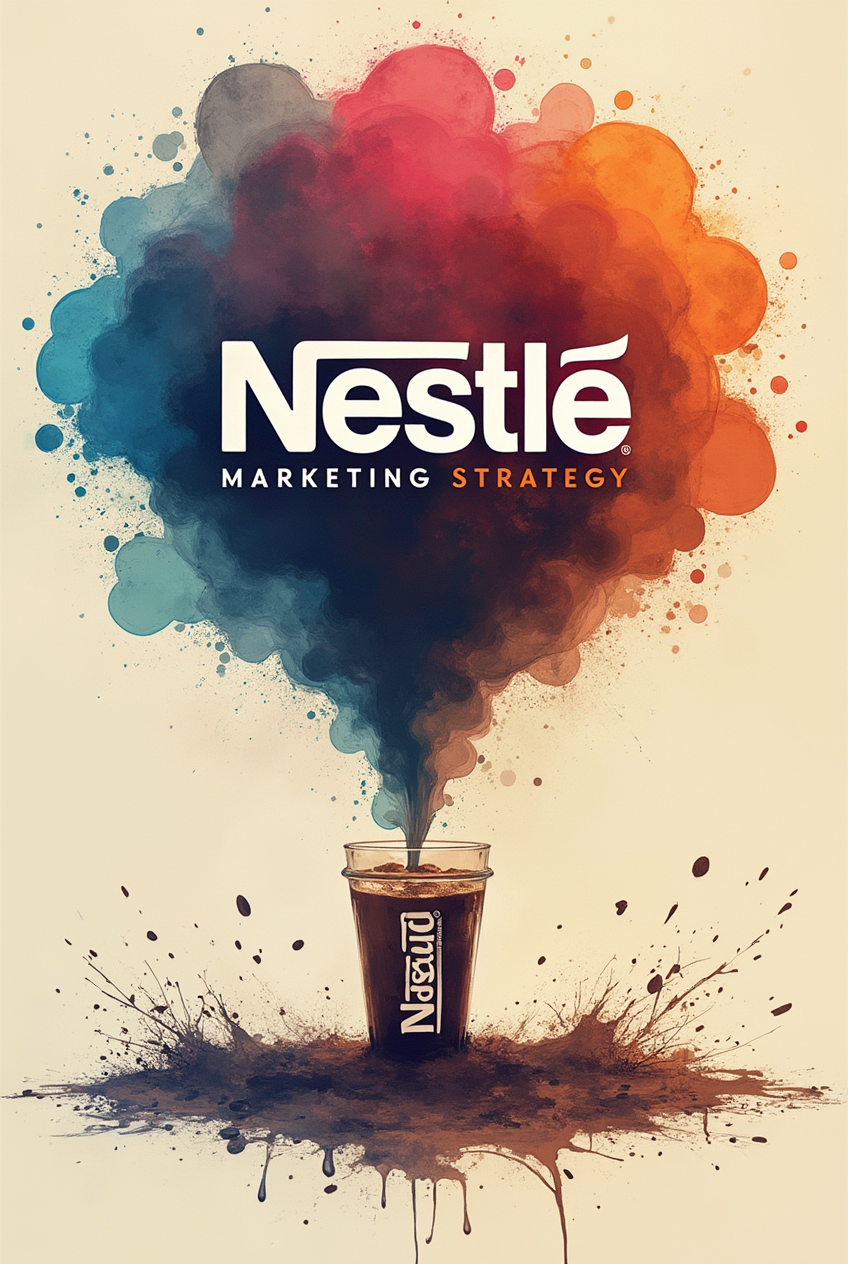In the dynamic landscape of digital marketing, audience targeting has emerged as a pivotal strategy for advertisers seeking to maximize the efficacy of their campaigns. At its core, audience targeting on platforms like Facebook functions akin to a finely tuned control panel, allowing marketers to precisely calibrate their outreach based on a myriad of parameters. This capability facilitates the connection between businesses and potential customers, ensuring that ads resonate more profoundly with the right individuals.
Utilizing Facebook ad targeting effectively involves understanding the various options available, such as demographics, interests, behaviors, and geographic locations. Advertisers have the power to adapt their approach by filtering through these specific characteristics, combining them to create a comprehensive profile of their desired audience. This strategic segmentation not only enhances the relevance of advertisements but also significantly improves the return on investment (ROI) by engaging users who are more likely to convert.
The significance of audience targeting cannot be overstated. As competition intensifies and consumers become increasingly selective, precision in reaching the right audience is essential for success. Crafting compelling advertisements that speak directly to potential customers requires an in-depth awareness of who they are and what they genuinely value. By leveraging Facebook’s sophisticated targeting tools, advertisers can ensure their messages land on the screens of those who are most likely to respond positively, thus amplifying the impact of their campaigns.
As we delve deeper into this vital aspect of Facebook ads targeting, it is crucial to appreciate how careful planning and execution can facilitate profound connections between brands and their audiences. Embracing the nuances of audience targeting will serve as the foundation for building successful advertising strategies that deliver tangible results in today’s competitive digital marketplace.
Table of Contents
Why Audience Targeting Matters
In the highly competitive landscape of digital marketing, particularly with Facebook ads targeting, precision is paramount. Effective audience targeting can dramatically enhance campaign performance and ensure that marketing dollars are being spent wisely. By honing in on specific demographics and interests, marketers can maximize their return on investment (ROI) and engage users more meaningfully. Studies show that targeted ads can increase engagement rates significantly compared to generic advertisements.
According to research conducted by the Data & Marketing Association, targeted advertising can increase ROI by up to 10 times when compared to non-targeted efforts. When businesses employ sophisticated strategies for facebook ads targeting, they are able to reach the individuals who are most likely to convert into customers. This targeted approach not only reduces wastage of advertising resources but also fosters a sense of relevance for potential customers.
Numerous case studies illustrate the considerable benefits of precise audience targeting. For instance, a retail-focused business that utilized Facebook’s demographic filters reported a 25% increase in sales within just a few months. By focusing on interests aligned with their product offerings, they were able to reach an audience that felt understood and catered to. Another example includes a nonprofit organization that effectively employed psychographic targeting to boost donations significantly; their tailored messaging resonated with supporters, resulting in a 30% increase in contributions year-over-year. Such examples underscore the importance of leveraging audience insights to amplify marketing efforts.
In summary, effective audience targeting is not merely a supplementary strategy; it is integral to achieving optimal results in Facebook advertising campaigns. By understanding and addressing the preferences, behaviors, and characteristics of specific groups, businesses can ensure their messages are not only heard but embraced by their ideal audience. This strategic approach to facebook ad targeting ultimately strengthens brand engagement and enhances overall performance.
Understanding Facebook’s Targeting Options
Facebook ad targeting allows advertisers to refine their audience through a variety of options designed to enhance the effectiveness of their campaigns. One primary method is demographic targeting, which includes aspects such as age, gender, and location. Advertisers can specify these parameters to reach audiences that are most likely to convert. For example, a business selling children’s toys may focus its campaigns on parents aged 25-40 within specific geographic regions, ensuring their ads are directed to those who are engaged and potentially interested in their products.
In addition to demographic targeting, Facebook provides advertisers with the ability to hone in on specific interests and behaviors. Facebook categorizes its users based on their past actions, interests, and online engagement. Advertisers can target people who have shown an interest in particular activities, brands, or topics, allowing for highly tailored content delivery. This level of precision means advertisers can connect with users who have already demonstrated a penchant for similar products or services, significantly increasing the likelihood of engagement and conversion.
Furthermore, the platform offers options for creating custom audiences and lookalike audiences, which can be particularly powerful strategies for expanding reach. Custom audiences allow marketers to upload their existing customer lists or target website visitors, ensuring they are reconnecting with users who are already familiar with their brand. Meanwhile, lookalike audiences enable advertisers to reach new users who share similar characteristics with their existing customers, thus broadening their potential customer base while maintaining relevance. By utilizing these advanced targeting options, businesses can not only optimize their Facebook ads targeting but also enhance overall campaign performance and return on investment.
Adjusting Your Targeting with Facebook’s Control Panel
Facebook’s control panel is an invaluable resource for advertisers seeking to refine their facebook ads targeting strategies effectively. The interface provides various tools, including dials and sliders, which allow businesses to adjust their audience specifications according to evolving campaign needs and objectives. With this user-friendly setup, marketers can easily toggle demographic factors such as age, gender, location, and interests to achieve the most relevant reach.
One of the key advantages of using Facebook’s control panel is its granularity in audience segmentation. Advertisers can utilize performance metrics to guide their adjustments. For instance, examining engagement levels can inform decisions about which audience segments are responding positively to certain ads, prompting marketers to allocate budget toward high-performing groups. This actionable data facilitates a more efficient allocation of advertising resources, ensuring that the right message reaches the appropriate audience.
Moreover, utilizing Facebook’s control panel enables advertisers to experiment with different targeting methods. For example, by leveraging the custom audiences feature, advertisers can upload their customer lists to identify and reach similar potential clients. Furthermore, the lookalike audience tool can be adjusted by selecting the audience size, ultimately influencing the breadth of the ad reach. This ensures that advertising efforts are aligned with defined business goals.
As you refine your audience segments, consider implementing A/B testing to measure the effectiveness of various targeting approaches. Continuously monitoring performance allows for real-time adjustments that can lead to improved ad effectiveness. Clear goals should guide the adjustments made within Facebook’s control panel, leading to an optimized approach in your facebook ads targeting strategy, resulting in enhanced campaign performance and return on investment.
Strategies for Effective Facebook Ad Targeting
Successful Facebook ad targeting requires a deep understanding of your audience, along with an array of strategies to reach them effectively. First and foremost, utilizing Facebook’s robust demographic targeting can significantly enhance your ad reach. By selecting key demographics such as age, gender, location, and even interests, marketers can ensure that their ads are shown to the most relevant consumers. For instance, if you are promoting a high-end fitness product, targeting an audience interested in fitness trends and higher income levels can yield better engagement and conversion rates.
Another effective strategy is to leverage custom audiences. This allows you to upload your own customer lists, which Facebook can match with its users. By targeting existing customers, you can nurture relationships and encourage repeat purchases. Beyond this, lookalike audiences can expand your reach by finding new potential customers with similar characteristics to your current audience. This is particularly useful when scaling successful ad campaigns, as it identifies individuals who are likely to have a genuine interest in your offerings.
Moreover, the use of behavior-based targeting can refine your campaigns further. Facebook tracks user behaviors, such as purchasing habits and device usage, allowing marketers to tailor their messages accordingly. For instance, a travel agency might focus on users who frequently engage with travel content, using ad messaging that highlights exclusive deals or unique travel experiences. Additionally, contextual relevance can enhance campaign effectiveness; creating ads that align not only with user interests but also with seasonal trends can capitalize on peak purchasing periods.
Finally, A/B testing different ad creatives ensures that you continually optimize your Facebook ad targeting strategies. This method allows marketers to analyze which ad variations perform better across different audience segments, leading to improved messaging and heightened ad resonance. Ultimately, through diligent analysis and testing, advertisers can refine their targeting strategies, leading to a higher return on investment.
Testing and Optimizing Your Targeting
When it comes to Facebook ad targeting, testing and optimization are crucial components that can significantly impact the success of an advertising campaign. The ever-evolving landscape of digital marketing necessitates a systematic approach to refine audience targeting effectively. Implementing A/B testing methodologies allows advertisers to experiment with different parameters and strategies, thereby identifying the most effective combinations for reaching their desired audience.
During A/B testing, advertisers develop two or more variations of their ads—differentiated by elements such as headlines, images, calls to action, or targeting options. By monitoring how each version performs, it becomes possible to glean insights into which aspects resonate best with the target audience. This data-driven approach not only aids in honing the ad content but also enhances audience targeting by revealing specific demographic or psychographic traits that yield better engagement.
Following the initial testing phase, analyzing the results is essential for making informed performance adjustments. Metrics such as click-through rates, conversion rates, and engagement levels provide valuable feedback on how effectively your ads are reaching and resonating with your audience. Based on these insights, advertisers can shift their focus to more profitable segments or reallocate resources towards strategies that show a higher return on investment.
Continuous improvement is a vital aspect of successful ad campaigns on Facebook. The digital environment is in constant flux, and audiences’ preferences might evolve over time. Therefore, regularly revisiting targeting strategies and applying the learnings from previous campaigns ensure that advertisers not only stay competitive but also adapt to changing market dynamics. In summary, leveraging A/B testing and data analytics fosters a culture of innovation that enhances Facebook ads targeting, ultimately leading to more effective and impactful advertising efforts.
Common Pitfalls to Avoid in Facebook Ad Targeting
When engaging in Facebook ad targeting, advertisers can often fall into several common traps that hinder their campaign’s success. One of the primary missteps is targeting an audience that is either overly narrow or excessively broad. While the intention may be to connect with a specific demographic, narrowing the audience too much can lead to limited reach and unnecessary stress on the advertising budget. Conversely, targeting a broad audience may result in high engagement but low conversions, as the ads might not resonate with the users who see them.
Another pitfall to avoid is misinterpreting audience insights. Facebook provides a wealth of data about user behaviors, preferences, and interests, which can be immensely beneficial for advertisers. However, without a proper understanding of how to analyze and apply this data, marketers may make misguided decisions. For instance, assuming that interest in a certain topic equates to a genuine likelihood of conversion can lead to misguided targeting choices.
It’s also essential to be wary of audience fatigue. When ads are shown too frequently to the same users, they can grow tired of seeing them, resulting in diminished engagement. This can particularly occur in campaigns where targeting is not continually optimized and refreshed. A rigorous approach to monitoring ad performance metrics can help identify such fatigue early on.
Lastly, neglecting the use of A/B testing in Facebook ad targeting can mean missing out on valuable learning opportunities. By testing different audience segments, creative elements, and messaging, advertisers can better understand what resonates with their audience and refine their targeting strategies accordingly. Recognizing these pitfalls will empower advertisers to tweak their tactics, ultimately leading to more effective advertising campaigns on the platform.
Conclusion: The Value of Precise Targeting
In the rapidly evolving landscape of digital marketing, mastering Facebook ad targeting has become increasingly vital for businesses aiming to optimize their advertising strategies. Through our exploration of various targeting methods, it is evident that precise targeting significantly enhances engagement rates and overall return on investment (ROI). By focusing on specific audience segments, advertisers can ensure their messages reach individuals who are more likely to respond positively, rather than casting a wide net that may result in wasted impressions and budget.
Key facets of effective targeting include demographic, geographic, behavioral, and interest-based strategies. Each of these approaches allows advertisers to hone in on their desired audience with remarkable accuracy. For instance, demographic targeting enables businesses to tailor their ads based on age, gender, and other characteristics, while behavioral targeting considers users’ online interactions and preferences. By leveraging these capabilities, advertisers can not only increase the likelihood of conversion but also establish stronger connections with their audience, ultimately building brand loyalty.
Additionally, continuous experimentation with different audience groups plays a critical role in achieving optimal Facebook ad performance. The platform’s robust analytics tools allow advertisers to assess the effectiveness of their targeting efforts and make necessary adjustments. This iterative process is essential for understanding which audience segments yield the best results and for refining ad strategies over time. Therefore, marketers are encouraged to embrace a data-driven approach, utilizing A/B testing and audience insights to enhance their targeting efforts continually.
In conclusion, precise targeting within Facebook ads can dramatically transform an advertising campaign’s success. By experimenting with various audience groups and analyzing performance metrics, businesses can unlock new opportunities for engagement and ROI. As the digital landscape remains competitive, adopting these strategies will be key to staying ahead in the ever-changing world of online marketing.










